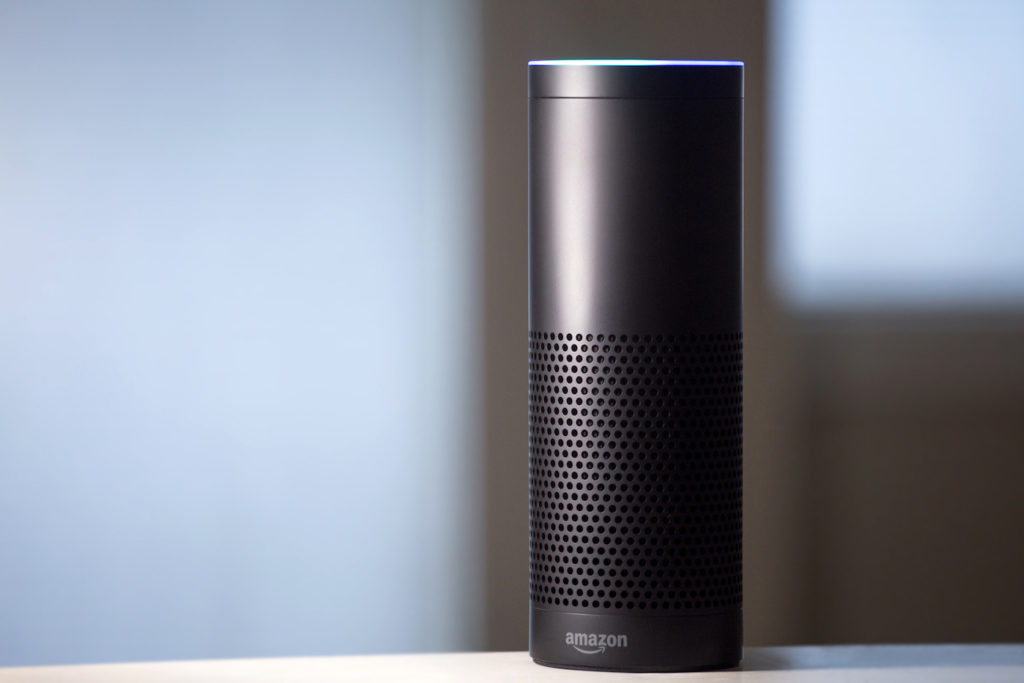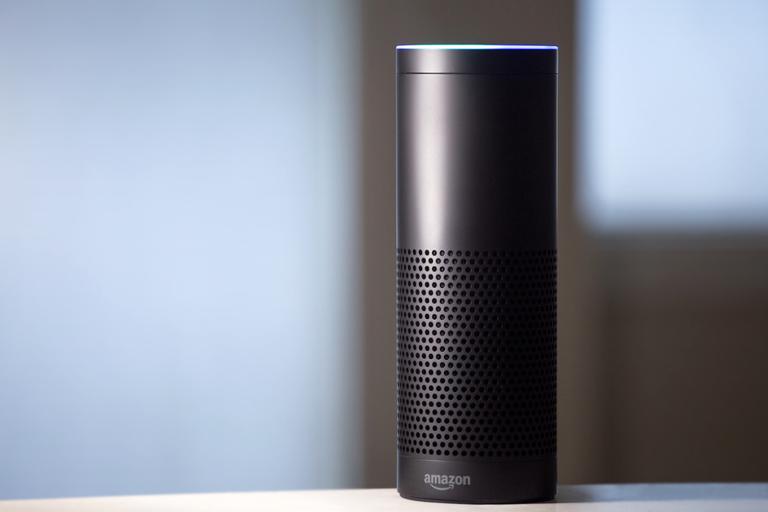 Amazon Lex, a tool for building chatbots (or in Amazon’s parlance, “conversational interfaces”), is now generally available. Lex leverages the same machine-learning technology that powers Alexa, Amazon’s voice-activated digital assistant for hardware devices such as the Echo. It features integration with Slack and Twilio, SDK support for a variety of platforms (iOS, Java, Android, JavaScript, Go, and so on), and previews of the response cards that pop up on the user’s screen in response to queries. Another feature introduced since the preview: utterance monitoring. “Amazon Lex now records utterances that were not recognized by your bot, otherwise known as missed utterances. You can review the list and add the relevant ones to your bot,” read Amazon’s blog post accompanying the release. “You can also watch the following CloudWatch metrics to get a better sense of how your users are interacting with your bot. Over time, as you add additional utterances and improve your bot in other ways, the metrics should be on the decline.” Of particular interest to developers is Lex’s pricing scheme, which, like other Amazon cloud products, is based on usage: $0.004 per voice request and $0.00075 per text request. That means if your customer-service bot fields 1,000 speech requests, for example, you end up paying Amazon $4.00. Better hope that customers don’t ask the bot to repeat itself too many times. Amazon hasn’t exactly kept Lex or its other A.I. projects under wraps. Late last year, Amazon released preview versions of several artificial intelligence tools for developers. These included Amazon Polly, which lets tech pros build applications that talk back to a user; Amazon Rekognition, for analyzing and identifying elements in images; and Lex. At the time, Amazon made no secret of its intention to place Lex head-to-head against Microsoft’s Azure Bot Service, Facebook’s Bots for Messenger, and similar services. In a bid to win that battle for developer attention, Amazon conceived as Lex as a more streamlined interface for building bots, thanks to the company’s existing portfolio of tools and cloud services. In theory, Lex’s utilization of Amazon’s research into automatic speech recognition (i.e., speech to text) and natural-language understanding will give it a decided advantage in the growing chatbot wars, especially as some companies like Facebook seem to have trouble fully actualizing the technology. But the true test is whether developers end up actually building with Lex.
Amazon Lex, a tool for building chatbots (or in Amazon’s parlance, “conversational interfaces”), is now generally available. Lex leverages the same machine-learning technology that powers Alexa, Amazon’s voice-activated digital assistant for hardware devices such as the Echo. It features integration with Slack and Twilio, SDK support for a variety of platforms (iOS, Java, Android, JavaScript, Go, and so on), and previews of the response cards that pop up on the user’s screen in response to queries. Another feature introduced since the preview: utterance monitoring. “Amazon Lex now records utterances that were not recognized by your bot, otherwise known as missed utterances. You can review the list and add the relevant ones to your bot,” read Amazon’s blog post accompanying the release. “You can also watch the following CloudWatch metrics to get a better sense of how your users are interacting with your bot. Over time, as you add additional utterances and improve your bot in other ways, the metrics should be on the decline.” Of particular interest to developers is Lex’s pricing scheme, which, like other Amazon cloud products, is based on usage: $0.004 per voice request and $0.00075 per text request. That means if your customer-service bot fields 1,000 speech requests, for example, you end up paying Amazon $4.00. Better hope that customers don’t ask the bot to repeat itself too many times. Amazon hasn’t exactly kept Lex or its other A.I. projects under wraps. Late last year, Amazon released preview versions of several artificial intelligence tools for developers. These included Amazon Polly, which lets tech pros build applications that talk back to a user; Amazon Rekognition, for analyzing and identifying elements in images; and Lex. At the time, Amazon made no secret of its intention to place Lex head-to-head against Microsoft’s Azure Bot Service, Facebook’s Bots for Messenger, and similar services. In a bid to win that battle for developer attention, Amazon conceived as Lex as a more streamlined interface for building bots, thanks to the company’s existing portfolio of tools and cloud services. In theory, Lex’s utilization of Amazon’s research into automatic speech recognition (i.e., speech to text) and natural-language understanding will give it a decided advantage in the growing chatbot wars, especially as some companies like Facebook seem to have trouble fully actualizing the technology. But the true test is whether developers end up actually building with Lex. Amazon's Lex Tool for Chatbots Generally Available
 Amazon Lex, a tool for building chatbots (or in Amazon’s parlance, “conversational interfaces”), is now generally available. Lex leverages the same machine-learning technology that powers Alexa, Amazon’s voice-activated digital assistant for hardware devices such as the Echo. It features integration with Slack and Twilio, SDK support for a variety of platforms (iOS, Java, Android, JavaScript, Go, and so on), and previews of the response cards that pop up on the user’s screen in response to queries. Another feature introduced since the preview: utterance monitoring. “Amazon Lex now records utterances that were not recognized by your bot, otherwise known as missed utterances. You can review the list and add the relevant ones to your bot,” read Amazon’s blog post accompanying the release. “You can also watch the following CloudWatch metrics to get a better sense of how your users are interacting with your bot. Over time, as you add additional utterances and improve your bot in other ways, the metrics should be on the decline.” Of particular interest to developers is Lex’s pricing scheme, which, like other Amazon cloud products, is based on usage: $0.004 per voice request and $0.00075 per text request. That means if your customer-service bot fields 1,000 speech requests, for example, you end up paying Amazon $4.00. Better hope that customers don’t ask the bot to repeat itself too many times. Amazon hasn’t exactly kept Lex or its other A.I. projects under wraps. Late last year, Amazon released preview versions of several artificial intelligence tools for developers. These included Amazon Polly, which lets tech pros build applications that talk back to a user; Amazon Rekognition, for analyzing and identifying elements in images; and Lex. At the time, Amazon made no secret of its intention to place Lex head-to-head against Microsoft’s Azure Bot Service, Facebook’s Bots for Messenger, and similar services. In a bid to win that battle for developer attention, Amazon conceived as Lex as a more streamlined interface for building bots, thanks to the company’s existing portfolio of tools and cloud services. In theory, Lex’s utilization of Amazon’s research into automatic speech recognition (i.e., speech to text) and natural-language understanding will give it a decided advantage in the growing chatbot wars, especially as some companies like Facebook seem to have trouble fully actualizing the technology. But the true test is whether developers end up actually building with Lex.
Amazon Lex, a tool for building chatbots (or in Amazon’s parlance, “conversational interfaces”), is now generally available. Lex leverages the same machine-learning technology that powers Alexa, Amazon’s voice-activated digital assistant for hardware devices such as the Echo. It features integration with Slack and Twilio, SDK support for a variety of platforms (iOS, Java, Android, JavaScript, Go, and so on), and previews of the response cards that pop up on the user’s screen in response to queries. Another feature introduced since the preview: utterance monitoring. “Amazon Lex now records utterances that were not recognized by your bot, otherwise known as missed utterances. You can review the list and add the relevant ones to your bot,” read Amazon’s blog post accompanying the release. “You can also watch the following CloudWatch metrics to get a better sense of how your users are interacting with your bot. Over time, as you add additional utterances and improve your bot in other ways, the metrics should be on the decline.” Of particular interest to developers is Lex’s pricing scheme, which, like other Amazon cloud products, is based on usage: $0.004 per voice request and $0.00075 per text request. That means if your customer-service bot fields 1,000 speech requests, for example, you end up paying Amazon $4.00. Better hope that customers don’t ask the bot to repeat itself too many times. Amazon hasn’t exactly kept Lex or its other A.I. projects under wraps. Late last year, Amazon released preview versions of several artificial intelligence tools for developers. These included Amazon Polly, which lets tech pros build applications that talk back to a user; Amazon Rekognition, for analyzing and identifying elements in images; and Lex. At the time, Amazon made no secret of its intention to place Lex head-to-head against Microsoft’s Azure Bot Service, Facebook’s Bots for Messenger, and similar services. In a bid to win that battle for developer attention, Amazon conceived as Lex as a more streamlined interface for building bots, thanks to the company’s existing portfolio of tools and cloud services. In theory, Lex’s utilization of Amazon’s research into automatic speech recognition (i.e., speech to text) and natural-language understanding will give it a decided advantage in the growing chatbot wars, especially as some companies like Facebook seem to have trouble fully actualizing the technology. But the true test is whether developers end up actually building with Lex. 
